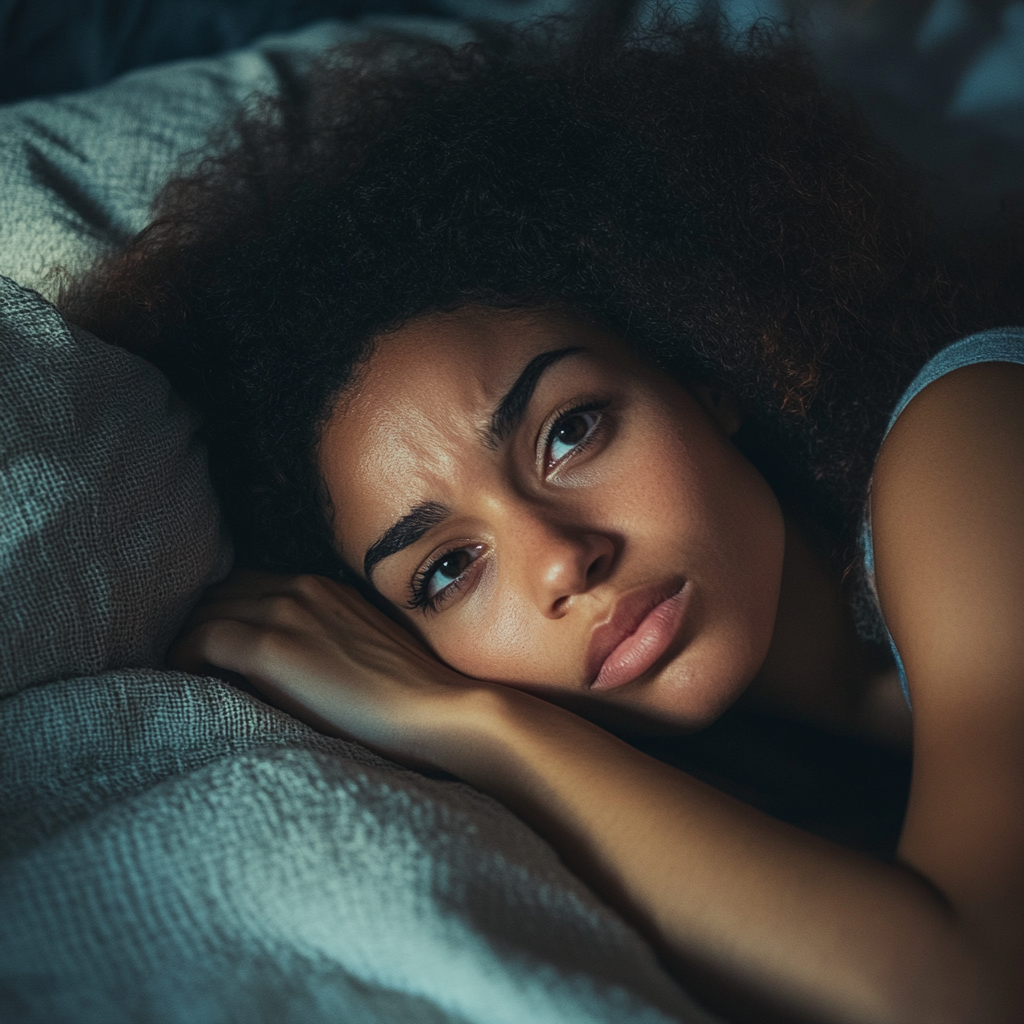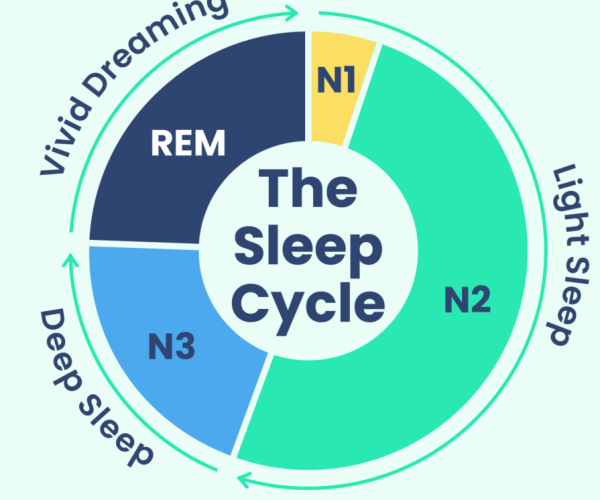Sleep Disorders

What is sleep?
Sleep refers to a reversible period of unconsciousness that is associated with a decreased level of response to external stimuli or disturbances. Some common postures during sleep are closing the eyes and lying down.
What are the Stages of Sleep?
Sleep is divided into two major stages:
- The Rapid Eye Movement (REM) Sleep: In this stage, there is high brain activity. However, the muscles are not able to move, so even though the brain is working, the individual cannot act out their intent. REM sleep is where most vivid dreams happen, and it is also characterized by the movement of the eye muscles, hence the name. the REM sleep
- The Non-Rapid Eye Movement (NREM) Sleep: In this stage, there is no rapid eye movement, and brain activity is significantly reduced. It is further divided into:
- NREM 1
- NREM 2
- NREM 3
About 75% of sleep is spent in the NREM stages, with most of that spent in the N2 in adults.
Sleep Cycle
The sleep cycle goes from wakefulness to the 3 stages of NREM sleep to REM sleep and then repeats itself. It takes about 90 to 110 minutes for a sleep cycle to be completed.

Source: https://www.sleepfoundation.org/stages-of-sleep
What are the physiological changes that occur during sleep?
Brain Activity: During NREM sleep, there is a decreased firing rate of brain cells. However, during REM sleep, brain cells increase their firing rate.
Body Temperature: Body temperature is reduced during sleep by about 1 or 2 degrees Fahrenheit.
Heart: There is a general reduction in the heart rate and blood pressure during NREM sleep. However, during REM sleep, there is a significant increase in heart rate and blood pressure.
Other physiological processes are also reduced during sleep. For instance, the kidney reduces its urine production. But some other processes such as digestion and repair of cells are increased during sleep. Substances like the growth hormone are also secreted during sleep. Hence, one importance of sleep is that it allows processes like growth to occur.
Sleep Disorders
Sleep disorders is a term for different conditions in which there is a disruption of normal sleep patterns. They are so common and affect the quality of life of many individuals around the world. There are more than 80 different sleep disorders. However the ICD-10 has categorized them into six major classes:
- Insomnia: This refers to conditions that are characterized by difficulty in falling asleep, and/or remaining asleep. People suffering from insomnia have a disorder in initiating the process of sleep, or maintaining sleep after they initiate it. If you have insomnia, you may have to lie down for long periods before you fall asleep, sleep for only short periods, spend much of the night awake, feel unrefreshed like you didn’t sleep at all, or wake up too early. Insomnia can be a primary disorder on its own or could be secondary to another medical condition.
- Sleep Apnea: Sleep apnea is characterized by breathing cessation for short periods of time while the patient is asleep. In this disorder, the person experiences breathing pauses of at least 10 seconds, while sleeping. Some other features of this disorder include daytime sleepiness, loud snoring, depression, and irritability.
- Hypersomnia: In this condition, there is a characteristic excessive daytime sleepiness. The hypersomnolence occurs during normal waking hours and can affect day-to-day activities and cognitive function.
- Parasomnias are a group of sleep disorders that are characterized by sleep disruption. Parasomnias can be further subdivided into:
- Arousal disorders
- Sleep-wake transition disorders
- Parasomnias of REM sleep
- Nonspecific parasomnias
Examples of disorders in this group include sleep terror disorders, restless leg syndrome, sleepwalking, or nightmare disorders.
- Circadian rhythm sleep disorders: In these disorders, there is consistent sleep disruption which can be excessive sleepiness or insomnia, that is as a result of a conflict between the internal sleep cycle and external environment of the individual.
- Sleep-Related Movement Disorders: As the name implies, this refers to conditions in which there are abnormal movements during sleep. These movements are due to a disorder of muscular control – and the specific cause depends on the particular movement disorder. Examples of disorders in this category include periodic limb movement disorders, sleep-related leg cramps, and sleep-related bruxism.
Factors that Affect Sleep
There are some factors that determine the quality of your sleep. Some of these are:
- Sleep schedule: Having a regular sleep schedule has been shown to enhance sleep.
- Sleep environment: Your environment also dictates whether you can fall asleep and remain asleep for long or not. A noisy room with several lights on does not favour good sleep. To sleep well, turn off the TV, use dim lights, and ensure the room is quiet.
- Caffeine and Alcohol: These substances have been shown to interfere with most people’s ability to fall asleep or maintain sleep. They should be avoided before bedtime.
- Medications: Some medications may interfere with your body’s ability to initiate or maintain sleep. Discuss with your doctor if you are experiencing any side effects that affect your sleep from any of the medications you are using. Avoid sleeping pills, except those prescribed by a doctor. Sleeping pills can be addictive, and eventually, you may not be able to sleep without them, and may even need increasingly higher doses to fall asleep or stay asleep. This can affect your sleep cycle negatively.
- Diet: What you eat and how you eat affects how you sleep. If you eat very late at night or eat too quickly, you may experience GERD (Gastroesophageal Reflux Disease), Dyspepsia, or constipation, which may affect your sleep. Spicy food, and stimulants, like coke, coffee, and chocolate may worsen the quality of your sleep.
- Stress: The relationship between stress and sleep is so significant. Studies show that people who do not sleep well (less than 7 hours of sleepa sleep wreport higher stress levels. People with higher stress levels also find it difficult to sleep up to the recommended number of hours every night.

- Pain and Illnesses: Pain significantly affects sleep. Individuals in severe pain may need analgesics to be able to sleep. Usually, the solution to this is to treat the underlying condition causing the pain.
- Sleep Disorders: Any type of sleep disorder would affect the quality and quantity of sleep, eventually affecting the quality of life.
Self-care Tips There are so many things you can do at home to deal with sleep disorders. Self-care tips include things to avoid and things to do.
Things to Avoid
- Expecting not to sleep before you go to bed. If you think you will not sleep before you go to bed, you are more likely to indulge in things that would not aid your sleep, for instance, using your phone or watching TV.
- Going to Bed when you do not feel sleepy: If you keep going to bed when you do not feel sleepy, your brain may begin to associate being in bed with being awake, and that is not good for sleep
- Checking the time repeatedly to see how long you have been up: This will make you even more anxious and make it harder for you to sleep
- Spending time running through different work projects or events in bed: This can make it very difficult for you to sleep
- Beverages like caffeine and alcohol
- Bright rooms
Things to Do
- Have a Sleep/wake routine: A routine you do, when you wake up, can greatly improve the quality of your sleep, for instance, you can start the day by waking at the same time every day. This teaches your body it’s time to wake up.
Your wake routine can include:
- Meditation
- Stretching exercises
- Dressing up
- Breakfast
- Walking your dog
The key here is to engage in activities that help the body know it is time to get active, it’s daytime.
At night, your bedtime routine can be something like this:
- Taking dinner at a specific time
- Having a bath
- Wearing your sleepwear
- A constant time you hit the bed
- Meditation
- Reduce lights in your room
- Reading a book
- Listening to deep sleep music: It is not a fad. Deep sleep music has been shown by numerous studies to significantly improve sleep quality, and reduce anxiety and sleep disturbances in adults with sleep problems.
Other activities you can also engage in at night include:
Breathing exercises
Slow, deep breaths are one of the easiest ways to calm your body down. Several breathing exercises have been shown to aid sleep. Some common breathing exercises are:
4-7-8 breathing
It’s a simple series of breathing exercises
Steps
- Breathe in through your nose for 4 seconds
- Hold your breath for another 7 seconds
- Breathe out through your mouth for 8 seconds
- Do this for a few minutes before bedtime, and as you get comfortable, increase the time you spend with the 4-7-8 breathing.
Diaphragmatic Breathing
This is also known as belly or abdominal breathing.
Steps
- While lying on our back place one hand on the upper part of your chest, and the other hand on top of your belly, just below the rib cage.
- Breathe in through your nose. Ensure your belly rises as the air goes through, while the hand on your upper chest remains very still.
- Tighten your stomach muscles and breathe out. Ensure that your upper chest is still
- Repeat the steps.
It might take you some time to get comfortable with this exercise, but it is very effective in reducing stress and increasing relaxation.
Box breathing
This is a simple breathing exercise that adds visualization to breathing patterns. It involves visualizing a box with 4 sides, to remind you of the pattern and length that each breath should take.
Steps
- Breathe in through your nose for 4 counts
- Hold your breathe for another 4 counts
- Slowly breathe out through your mouth for another 4 counts
- Hold your breathe for another 4 counts
- Repeat these steps for some minutes before going to bed.
If you are experiencing any symptoms of a sleep disorder, then you may have to see a healthcare professional. Do not allow symptoms to get worse before reaching out. Sleep disorders can be managed with the right approach and environment.

 Browse Categories
Browse Categories 

